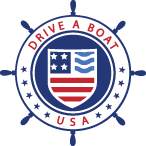Visual Distress Signals While Boating: Types and Regulations
A Visual Distress Signal (VDS) is a crucial piece of boating safety equipment that allows your boat to be located swiftly during emergencies. If used correctly, visual distress signals make it possible to respond quickly to situations that could otherwise lead to tragic results.
VDS signals include:
- Day signals that are visible in sunlight
- Night signals that are visible in the dark
- Signals that can be used both during the day and at night.
Boating visual distress signals can be either pyrotechnic (using smoke and flame), or non-pyrotechnic (non-combustible). There are many types of signals that meet with federal boating regulations. Note that visual distress signals are not the same as navigation lights, which are subject to different rules and requirements.
Visual Distress Signals: regulations
The law prohibits using a distress signal unless the people on a boat are threatened by immediate or potential danger and require assistance. If you use a VDS in a situation other than an emergency, you will be severely penalized.
As of January 21, 1981, all recreational boats navigating U.S. Coastal Waters, the Great Lakes, or water bodies directly linked to them—up to locations where these waters are less than 2 miles wide—must, by law, have visual distress signals on board. Additionally, U.S.-owned boats must carry these signals in international waters.
There are some exceptions. During daylight hours, the following boats do not need to carry visual distress signals:
- Class A recreational boats (boat size shorter than 16 feet)
- Boats involved in organized events like regattas, races or marine parades
- Open sailboats under 26 feet in length without engines
- Manually propelled boats like canoes.
However, these exempted boats must possess visual distress signals approved for nighttime use if operating at night in the aforementioned waters.
The Visual Distress Signal requirements for commercial vessels may be different. These are outlined in Title 46 of the Code of Federal Regulations.
Types of Visual Distress Signals
A wide range of signaling devices, both pyrotechnic and non-pyrotechnic, will effectively meet regulations. A complete list of approved Visual Distress Signals is available from the USCG.
Recreational boats under 16 feet in coastal waters are required to carry night signaling devices when operating at night. All other boats must have both night and day signaling devices.
Many combinations of devices can be carried, as long as they total:
- three signals for day use
- three signals for night use.
A combination of three day/night signaling devices satisfies both requirements.
Pyrotechnic Visual Distress Signals
Pyrotechnic devices like flares are the most commonly used type of VDS, as they are highly effective. However, they do produce intense heat, and their residue can cause burns and ignite easily combustible materials. Another drawback is that each device can only be used once. Pistol-launched and hand-held parachute flares and meteors share firearm-like characteristics and require careful handling and due respect.
There are several types of pyrotechnic VSDs:
- Pyrotechnic red flares, either hand held or aerial (day and night use)
- Pyrotechnic orange smoke flares, either hand held or floating (day use, best used in light to moderate winds)
- Red meteor flares or parachute flares (night use, or in poor visibility such as fog) Only Coast Guard or SOLAS flares can be used on recreational boats.
- Associated launchers of these signals
According to federal regulations, all pyrotechnic distress signals must be:
- U.S. Coast Guard approved
- Maintained to remain in proper usable condition
- Unexpired
- Easily accessible during emergencies.
Pyrotechnic devices will expire 42 months from the manufacturing date. Expired flares can be kept as backups but do not fulfill the legal obligation. To avoid the complications of verifying flare expiration dates, boaters may choose to rely on USCG-approved SOS distress lights (see below).
Note: Launchers for visual distress signals made before 1981 are exempt from the Coast Guard approval requirement.
Non-pyrotechnic Visual Distress Signaling Devices
Non-pyrotechnic devices must carry proof that they have been certified for use by the USCG. They must be in serviceable condition and stowed where they can be accessed quickly in case of an emergency.
Non-pyrotechnic VDS’s include:
- Orange Distress Flag (day use): The flag should measure at least 3 x 3 feet and display a black square and ball against an orange background. This flag is highly visible in bright sunlight, especially when it is waved with an object like a paddle or boat hook, or flown from a mast. Boaters may also use other types of flags to signal specific situations, such as the O flag to indicate ‘man overboard’. By respecting boating laws including boat capacity limits you can help to avoid this type of situation.
- Sea-marker Dye (day use): This dye comes in several colours and is best used when you are likely to be spotted via air search.
- Signal Mirror (day use): This is a useful tool, however it is not required by law. It is low cost and has no expiration date.
- Electric Distress Light (night use): Must automatically flash the international SOS distress signal (three short flashes, three long flashes, three short flashes) four to six times per minute. An ordinary flashlight is not bright enough to meet the USCG standards.
- SOS Distress Light (night use): This LED Visual Distress Signal device was designed to meet U.S. Coast Guard standards as a modern alternative to traditional pyrotechnic flares. Unlike conventional flares, this electronic version does not expire, addressing the issue of flare disposal. Its LED light can flash for up to 60 hours, a significant improvement over traditional flares that burn out within minutes. The SOS Distress Light precisely flashes the SOS sequence as mandated by the USCG, remaining visible for up to 10 nautical miles.
Remember, your VSD has to be suitable for specific weather conditions and other factors influencing your situation. For example, a given signal may be more or less useful depending on the distance between your boat and the source of help you are trying to solicit. It is therefore recommended that you carry multiple types of VSD On your boat.
Permissible combinations of Visual Distress Signals
The following are several combinations of devices that meet legal requirements:
- Three hand-held red flares (for use both day and night).
- One electric distress light (for night use only) and three hand-held orange smoke distress signals
- One hand-held red flare and two parachute flares (for use both day and night)
- One hand-held orange smoke signal, two floating orange smoke signals (for daytime use), and one electric distress light (for night use)
Visual Distress Signals: storage and use
To keep your VSDs in good condition, store them in a clearly-labeled watertight container. Make sure that the container is easy to access, but safety-proofed against young children. Check your Visual Distress devices before you leave the dock, along with the rest of your boating safety equipment.
You should only use your VSDs when they are likely to be spotted, such as when you see or hear a boat or airplane, or you think that there is someone on shore who will be able to help. Always use good judgement.
Visual Distress Signals on other boats
If you see a distress signal coming from another boat, you are not legally bound to respond, but the mutual respect among mariners dictates that an immediate positive response is necessary. In fact, the Federal Boat Safety Act of 1971 includes a clause to protect (within reason) any individuals who do their best to assist another mariner in distress.
Use your radio to notify the nearest Coast Guard Station or State authority. Recognized distress channels include:
- Channel 9 on CB
- Channel 16 on VHF marine radio (156.8 MHz)
Learn all about boating safety rules with Drive a Boat USA!
In our premium boating safety course, Drive A Boat USA teaches you everything you need to know about boater safety, including how to use Visual Distress Signals correctly and effectively.
Safe boating can be a matter of life or death. Contact us now to earn your official state-approved boating license in California, Florida or New York, and take you and your loved ones out on the water with skill and confidence!


